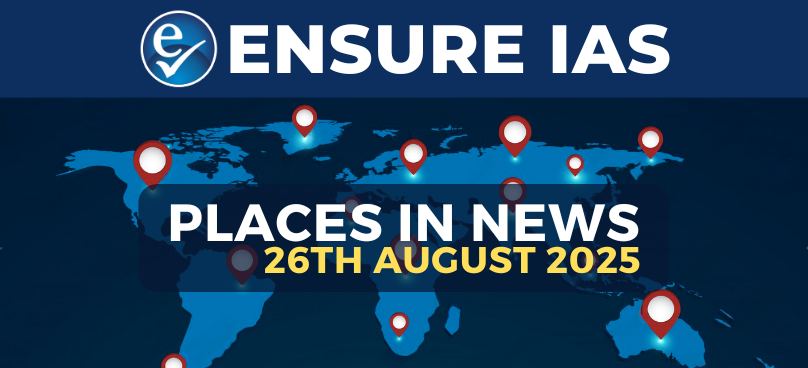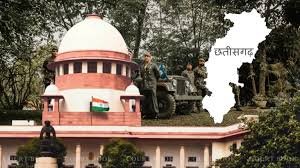Why in the News?
- NCERT has introduced a new arts education curriculum aligned with the National Education Policy (NEP), focusing on Indian ethos.
- For the first time, school textbooks for Classes 3 to 8 include Indian classical music, dance, theatre, and visual arts.
Key Highlights
- Alignment with NEP 2020
- The NEP emphasizes education rooted in Indian culture and heritage.
- The new textbooks aim to promote Indian Knowledge Systems and artistic traditions.
- Introduction of New Textbooks
- Bansuri: For Classes 3 to 5.
- Kriti: For Classes 6 to 8, introduced for the 2025-26 academic year.
- Features of Kriti for Class 8
- Focus on basics of classical music: swar (notes), laya (rhythm), and shabd (sound).
- Prescribes recitation of shlokas in Sanskrit using swar and laya patterns.
- Introduces folk/traditional songs in regional languages and patterns of seven notes in different layas.
- Includes ragas from both Hindustani and Carnatic music traditions.
- Dance and Performing Arts Content
- Covers eight Indian classical dance forms: Bharatnatyam, Kathak, Kathakali, Kuchipudi, Manipuri, Mohiniyattam, Odissi, and Sattriya.
- Draws references from classical Sanskrit texts like Natyashastra, Abhinaya Darpanam, and Brihaddeshi.
- Teaches basic hasta mudras, leaps, jumps, and formations for incorporation in creative projects.
- Pedagogical Approach and Objectives
- Focus is on exposure, not expertise; the aim is appreciation, not mastery.
- Encourages storytelling, abhinaya (acting), and cultural expression as interactive activities.
- Designed after one year of consultations, ensuring age-appropriate and stage-wise exposure.
| About Indian classical dance forms 1. Bharatanatyam (Tamil Nadu) a. Originates from Tamil Nadu and is one of the oldest classical dance forms in India, traditionally performed in temples as a form of devotional expression. b. Known for its fixed upper torso, bent legs, intricate footwork, and expressive gestures (mudras) and facial expressions (abhinaya). c. Accompanied by Carnatic music and often narrates stories from Hindu epics like the Ramayana, Mahabharata, and Puranas. 2. Kathak (North India) a. Originated in the courts and temples of North India, evolving under both Hindu and Mughal patronage. b. Characterized by fast footwork, intricate spins (chakkars), rhythmic patterns, and storytelling through gestures and expressions. c. Uses Hindustani classical music and often includes themes from epics as well as romantic narratives. 3. Kathakali (Kerala) a. A dramatic dance-theatre form from Kerala known for its elaborate costumes, heavy makeup, and facial expressions. b. Traditionally performed by men, it depicts stories from Hindu epics like the Mahabharata and Ramayana. c. Music combines percussion instruments like chenda and maddalam with vocal recitation of stories. 4. Kuchipudi (Andhra Pradesh) a. Originated in Andhra Pradesh as a dance-drama traditionally performed by male Brahmins in temples. b. Combines fast rhythmic footwork with graceful movements and expressive storytelling, often featuring mythological themes. c. Includes unique elements like dance on the rim of a brass plate or holding a pot on the head. 5. Manipuri (Manipur) a. A graceful and devotional dance form from Manipur, deeply connected with Vaishnavism and themes of Radha-Krishna love. b. Characterized by smooth, flowing movements, rounded gestures, and absence of vigorous foot stamping. c. Performed with Manipuri music and instruments like pung (drum) and cymbals. 6. Mohiniyattam (Kerala) a. A graceful, feminine dance form from Kerala, performed solo by women and linked with the concept of Mohini, the enchantress from Hindu mythology. b. Characterized by gentle, swaying movements, soft footwork, and elegant costumes with white and gold attire. c. Accompanied by Carnatic music with songs in Malayalam or Sanskrit. 7. Odissi (Odisha) a. Originated in Odisha as a temple dance dedicated to Lord Jagannath, with roots in devotional rituals. b. Known for its tribhangi posture (three bends), sculpturesque poses, and fluid torso movements. c. Dance repertoire is based on Odia music and themes from Jayadeva’s Gita Govinda and other devotional works. 8. Sattriya (Assam) a. Developed in Assam by the Vaishnavite saint Srimanta Sankardev as a medium of spreading Bhakti movement ideals. b. Traditionally performed in monasteries (sattras) by male monks, depicting episodes from the Bhagavata Purana and Ramayana. c. Characterized by rhythmic footwork, hand gestures, and devotional storytelling, accompanied by instruments like khol and cymbals. |
Implications
- Strengthening Cultural Roots
- Helps students understand and appreciate Indian art and heritage from an early age.
- Promotes cultural continuity in a globalized education system.
- Democratization of Arts Education
- Previously, access to classical music and dance required private training; now it is institutionalized within schools.
- Ensures inclusive exposure irrespective of socio-economic background.
- Cognitive and Creative Development
- Arts education enhances creativity, expression, and critical thinking.
- Exposure to rhythm, patterns, and storytelling improves cognitive flexibility.
- Linguistic and Regional Integration
- Incorporation of Sanskrit shlokas and regional folk songs fosters multilingualism.
- Promotes unity in diversity by blending different cultural traditions.
- Alignment with NEP and National Identity
- Strengthens the NEP objective of Indian ethos-based education.
- Encourages value-based learning and respect for traditional knowledge systems.
Challenges and Way Forward
| Challenges | Way Forward |
| Lack of trained teachers for classical art forms | Organize teacher training programs and workshops. |
| Limited infrastructure in schools | Allocate funds for dedicated art rooms and resources |
| Risk of rote learning instead of creative approach | Use activity-based and experiential learning models |
| Time constraints in existing curriculum | Integrate arts in a cross-disciplinary approach |
| Monitoring quality and consistency | Develop standardized guidelines and periodic reviews |
Conclusion
The integration of Indian classical music, dance, and visual arts into the school curriculum is a landmark step in realizing the vision of the NEP 2020. It not only preserves India’s rich cultural heritage but also enriches students’ creativity and holistic development. However, sustained teacher training, infrastructure development, and innovative pedagogical strategies will be essential to make this initiative successful.
| EnsureIAS Mains Question Q. Discuss the significance of integrating Indian classical music and dance into the school curriculum as per NEP 2020. How does this step contribute to cultural preservation and holistic education? What challenges need to be addressed for its effective implementation? (250 Words) |
| EnsureIAS Prelims Question Q. Which of the following pairs of classical dance forms and their states of origin are correctly matched? 1. Kathak – Uttar Pradesh 2. Mohiniyattam – Kerala 3. Sattriya – Assam 4. Odissi – Odisha Select the correct answer using the code given below: [A] 1 and 2 only Answer: [D] 1, 2, 3 and 4 Explanation: Kathak originated in North India, mainly Uttar Pradesh. Mohiniyattam is a classical dance of Kerala. Sattriya originated in Assam as part of Vaishnavite monasteries (Sattras). Odissi belongs to Odisha and is one of the oldest classical dance forms. |





